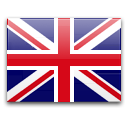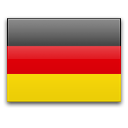scissors dictionary
The little dictionary of scissors
Eyes
Round or oval openings for thumb and fingers to operate the scissors.
etching
Labeling of the scissors with the manufacturer's logo, model name or place of manufacture "Solingen" by means of acid etching.
Sheet
The outer sides of the upper and lower beck, ergo the two halves of the scissors, are called leaf.
Chiro shape
In contrast to the classic scissors shape, the eyes (handle rings) of the chiroform face outwards and the handles (rear part of the scissors) are longer. As a result, less force is required when cutting hair.
Damascus steel
Also Damascus steel. Multi-layer folded steel, which is considered to be particularly hard. Machining technology originally comes from Damascus. The organic-looking, unique pattern is characteristic.
thinning scissors
Instead of cut surfaces, these scissors have "prongs" on both sides, which are also called serrations or teeth. Characteristics of the thinning scissors are two toothed cutting edges in contrast to the modeling scissors, which are only toothed on one side. Thinning scissors are used to severely thin out the hair.
elastic stopper
Spacer between the two scissor eyes: A small plastic or rubber stopper cushions the impact of the two grip rings. This makes the locking mechanism more comfortable and prevents wear and tear. Also sometimes called a bump stop.
finger hook
For supporting the little finger, which in this way facilitates the closing process and the handling of the scissors. Gentler on the hands and therefore usually only used with hairdressing scissors and dog scissors.
aisle
The two halves of the scissors must move against each other with maximum precision and fit together perfectly at the gait point (crossing point).
Business
This is where the two halves of the scissors connect. The smooth shape of the half-moon is decisive for the easy gait.
Grip rings (also eye rings)
Encloses the eyes, i.e. the finger openings. Alternatively, this means the removable rubber rings for the insides of the eyes.
crescent
This describes a special, interlocking shape of both parts, which move against each other precisely and softly.
straw
The lower, non-cutting part of a scissor cymbal.
hollow grind
If you look at the scissors from the side, you can see between the scissor blades. The hair is held securely in this cavity. The hollow grind improves the sharpness of the cutting edges.
hone / mocked
Finely polished cutting edges that become even sharper and allow creative slicing (see below).
Convex blades
Optimization of the angle at the cutting edge: it becomes more pointed and the sharpness of the cutting edge is optimized.
modeling scissors
It has a smooth and a serrated cutting edge. It is used to cut transitions and fringed contours.
upper and lower basin
What is meant are the two halves of the scissors: On the upper part you can see the screw, here you can usually see the manufacturer's logo and the model name. The Unterbeck is the counterpart below. Both parts fit together perfectly and are connected by the screw.
offset and semi-offset
Ergonomic or semi-ergonomic scissor shape with offset grip rings.
blank
person without manners. ;)
Furthermore, still unprocessed scissor cymbals.
Back
As the name suggests: back of a scissor cymbal.
screw
Connects both scissor pools. It is used to regulate the movement of a pair of scissors. Many screws can be individually adjusted or readjusted with a tool if they have become loose through heavy use. Ideally, this is done by a specialist, for example at our maintenance and repair service .
slice
Cutting technique in which the open scissor blades are pulled through the hair like a knife. Slicing requires a perfectly sharp cut. The intended effect of this technique is particularly soft, even step transitions in the hair.
Solingen
City in North Rhine-Westphalia that has been world-famous for its scissors and cutlery industry since the Middle Ages. Also nicknamed Blade City. Production headquarters of some of the most well-known cutlery manufacturers such as Zwilling, Tondeo and Jaguar and many more. Scissors or knives may only be marked with the lettering "Solingen" or "made in Solingen" if the essential manufacturing stages took place in Solingen .
steel
Hairdressing scissors are made of steel. Normal steel is used for the rather cheap models, which receives a certain rust protection through chrome or nickel plating. Today, however, stainless steel is used almost exclusively. They also include Japanese cobalt steel, Japanese steel or - in the case of knives - multiply folded Damascus steel. Some scissors also have a special titanium alloy with a bluish shimmer.
Stamp
Labeling of the scissors with the manufacturer's logo, model name or place of manufacture "Solingen". Alternatively, depending on the process, one also speaks of etching (coloring with acid), lasering or engraving. Scharfescheren.de also offers individual engraving for many products.
Tulip teeth
It gets its name from the tulip-shaped tooth heads. They offer precision when cutting, while the necks leave plenty of room for the remaining hair.
spire
Manicure scissors, the wider sheaths of which have a fine point reminiscent of a spire. A combination of wider nail scissors and finer cuticle scissors.
water
Technical term for the cutting edges on the upper and lower edges. They are actually the function carriers of a pair of scissors.
Perforation
Modeling and thinning scissors have serrated blades so that only parts of the passé are cut: for thinning, for feathery and flowing effects.
Between
The intermediate is the middle section of the scissors with crescent moon and screw hole.


